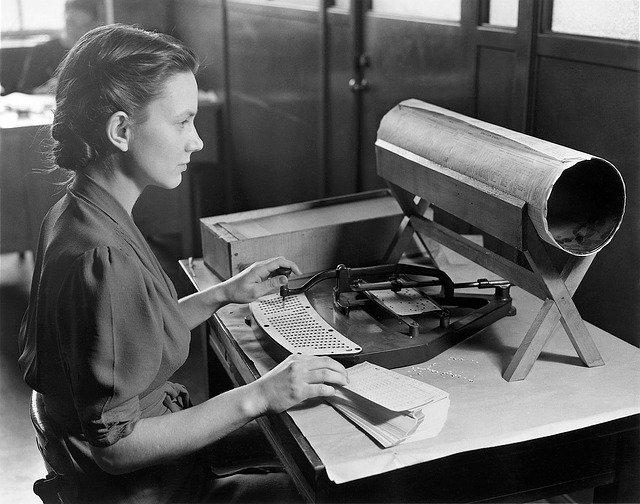Since 2009, every second Tuesday of October, thanks to Suw Charman-Anderson, the international Ada Lovelace Day is celebrated, a day to remember and celebrate the achievements of women in science, technology, engineering, and mathematics, and especially to remember who was a woman of the Victorian era who became an icon for the women in this guild or field. For this reason, now we will know part of who Ada Lovelace was.
Augusta Ada Byron
Ada Byron, daughter of Anne Isabella Milbanke and Lord Byron, was born on December 10, 1815, in the City of London. Presented as Augusta Ada Byron, she was raised by her mother because Lord Byron left home and the city a few months after the birth of her daughter. However, her mother, although did not have the best mother-daughter relationship with Ada, was concerned in giving her the best education, which led her to get her the best tutors and provide her with a strict and intense home education, which ranged from different languages to sciences, among them metamathematics. Which for the time was certainly an unusual education for a woman.
In part this strict education that Ada Byron received was due to the fact that her mother had studied algebra, geometric and astronomy, and wanted her daughter to distance herself from literary tendencies, and from that imagination, fantasy, and inventiveness that she was already beginning to show at a very young age, and whose gifts she had inherited from her father, something that was not to her mother’s liking.
Ada Byron’s education
Undoubtedly, and thanks to her mother, Ada had a great education, which Ada made the most of throughout her childhood, dedicating a lot of time and sacrificing perhaps many things of a young girl. It should be noted that Ada was a sickly girl that at the age of seven had an illness that prostrated her for several months and at fourteen because of measles her legs were temporarily paralyzed, however, gradually was enhancing her passion for mathematics and even fascinated with the idea of wanting to someday be able to fly, which led her to study the anatomy of birds to know the relationship between body and wings to so, even studied some materials for use when designing wings.
Ada Byron had as mathematics teachers Mary Somerville and Augustus De Morgan, from whom she always received scientific advice. It should be noted that Lord Morgan was a very important person in the early development of symbolic logic, and being a teacher at the University of London, he taught his course to Ada by correspondence, remembering as we mentioned before a world where inequality between men and women was very marked by society.
Friendship Ada and Charles
When she was 18 years old she met Charles Babbage, whose friendship she took advantage of to continue growing in her mathematical knowledge, this friendship became much more solid, thanks to the passion both shared for the mechanics and mathematics. Babbage who was a mathematician and scientific had designed a mechanical calculator known as the differential machine, and had also designed an analytical machine to run tabulation or calculation programs, although without building, the analytical engine. This engine used punched cards that allowed multiplying, dividing and processing a large amount of numerical data, these functions were presented at a conference in Italy, which was attended and summarized in an article by the Italian engineer Luigi Menabrea.
Ada was enthusiastic about this invention of Babbage, which led her to translate one year later from Italian to English the article presented by Menabrea, the English translation was published in an English newspaper, but it had the particularity of being three times longer than the original article, this because Ada had attached much of her own knowledge and material on the analytical engine, including how to use it. We can say that practically what Ada did was to establish the basis of computing programming through this article, below we will share part of what Ada wrote in that article.
“The distinguishing feature of the analytical machine, is the inclusion in it of the principle that Jacquard conceived to regulate the manufacture, by means of punched cards, of the most complicated brocade patterns. By enabling the mechanics to combine with each other in successions of unlimited variety and extension, a link is established between the material operations and the abstract mental processes of the more theoretical branch of mathematical science. A new language, broad and powerful, is developed for future employment in analysis, the truths of which may be managed, so that its application is more practical and precise for humanity than the measures available to us until now have done.”
“The Analytical Machine has no claim to originate anything. It’s capable of doing anything, provided we know how to order it to do it. It can follow the analysis; but it has no capacity to anticipate any analytic relation or truth. Furthermore, it is incumbent upon it to help us make available what we already know. It is calculated to do this primarily and above all, of course, by means of its executive faculties; but it is possible for it to exert an indirect influence on science itself in another way. For, by distributing and combining the truths and formulas of analysis in such a way as to make them as easily and quickly available to the mechanical combinations of the machine, the relation and nature of various subjects in that science necessarily receive a new light, and are more deeply investigated.”
Do you have any opinion on this subject? Do you know anything else about Ada Lovelace?
If you have any doubt or question you can contact us or write your query in the section below (comments section).
Image by Wikilmages via Pixabay.com under Creative Commons license.
